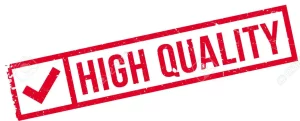- Premium Academic Help From Professionals
- +1 757 528 8682
- support@standardwriter.com
Evaluating the Transformational Leadership Perspective
Evaluating the Transformational Leadership Perspective
|
Order Number |
636738393092 |
|
Type of Project |
ESSAY |
|
Writer Level |
PHD VERIFIED |
|
Format |
APA |
|
Academic Sources |
10 |
|
Page Count |
3-12 PAGES |
Instructions/Descriptions
Evaluating the Transformational Leadership Perspective
Transformational leaders do make a difference.88 Subordinates are more satisfied and have higher affective organizational commitment under transformational leaders. They also perform their jobs better, engage in more organizational citizenship behaviors, and make better or more creative decisions. One study of bank branches reported that organizational commitment and financial performance seem to increase in branches whose manager had completed a transformational leadership training program.89
Transformational leadership is currently the most popular leadership perspective, but it faces a number of challenges. One problem is that some writers engage in circular logic 90 They define and measure transformational leadership by how well the leader inspires and engages employees rather than by whether the leader engages in behaviors we call transformational (e.g., communicating a vision). This approach makes it impossible to evaluate transformational leadership, because by definition and measurement, all transformational leaders are effective!
Another concern is that transformational leadership is usually described as a universal rather than contingency-oriented model. Only very recently have writers begun to explore the idea that transformational leadership is more valuable in some situations than others.91 For instance, transformational leadership is probably more appropriate when organizations need to adapt than when environmental conditions are stable. Preliminary evidence suggests that the transformational leadership perspective is relevant across cultures. However, there may be specific elements of transformational leadership, such as the way visions are formed and communicated, that are more appropriate in North America than other cultures.
Implicit Leadership Perspective
The competency, behavior, contingency, and transformational leadership perspectives make the basic assumption that leaders “make a difference.” Certainly, there is evidence that senior executives influence organizational performance. However, leadership also involves followers’ perceptions about the characteristics and influence of people they call leaders. This perceptual perspective of leadership, called implicit leadership theory, has two components: leader prototypes and the romance or attribution of leadership.92
8
Chapter Twelve Leadership in Organizational Settings
366
Part Three Team Processes
fa connect
Do leaders make a difference? Go to www.mcgrawhiilconnect.com to
assess your beliefs about the influence of leaders.
PROTOTYPES OF EFFECTIVE LEADERS
One aspect of implicit leadership theory states that everyone has leadership prototypes— preconceived beliefs about the features and behaviors of effective leaders.93 These prototypes, which develop through socialization within the family and society, shape the follower’s expectations and acceptance of others as leaders, and this in turn affects their willingness to remain as a follower. For example, one study reported that inherited personality characteristics significantly influence the perception that someone is a leader in a lead-erless situation.94
Leadership prototypes not only support a person’s role as leader; they also form or influence our perception of the leader’s effectiveness. In other words, people are more likely to believe a leader is effective when he or she looks like and acts consistently with their prototype of a leader.95 This prototype comparison process occurs because people have an inherent need to quickly evaluate individuals as leaders, yet leadership effectiveness is often ambiguous and might not be apparent for a long time.
THE ROMANCE OF LEADERSHIP
Along with relying on implicit prototypes of effective leaders, followers tend to distort their perception of the influence that leaders have on the environment. This “romance of
As the CEO of a successful company (Semco SA) and the author of best-selling business books, Ricardo Semler is a giant among corporate leaders in South America. Yet he warns that “romance of leadership” problems can occur when employees are blinded by charismatic leadership. “People will naturally create and nurture a charismatic figure. The charismatic figure, on the other hand, feeds this,” Semler explains. “The people at Semco don’t look and act like me. They are not yes-men by any means— [Yet] they credit me with successes that are not my own, and they don’t debit me my mistakes.”36
leadership” effect exists because in most cultures people want to believe that leaders make a difference. There are two basic reasons people inflate their perceptions of the leaders influence over the environment.97
First, leadership is a useful way for us to simplify life events. It is easier to explain organizational successes and failures in terms of the leader’s ability than by analyzing a complex array of other forces. Second, there is a strong tendency in the United States and other Western cultures to believe that life events are generated more from people than from uncontrollable natural forces.98 This illusion of control is satisfied by believing that events result from the rational actions of leaders. In other words, employees feel better believing that leaders make a difference, so they actively look for evidence that this is so.
One way that followers support their perceptions that leaders make a difference is through fundamental attribution error (see Chapter 3). Research has found that (at least in Western cultures) leaders are given credit or blame for the company’s success or failure because employees do not readily see the external forces that also influence these events. Leaders reinforce this belief by taking credit for organizational successes.99
The implicit leadership perspective provides valuable advice to improve leadership acceptance. It highlights that leadership depends on the perception of followers as much as the actual behaviors and formal roles of people calling themselves leaders. Potential leaders must be sensitive to this fact, understand what followers expect, and act accordingly. Individuals who do not make an effort to fit leadership prototypes will have more difficulty bringing about necessary organizational change.
367
Chapter Twelve Leadership in Organizational Settings
9
Part Three Team Processes
Cross-Cultural and Gender Issues in Leadership
367
Chapter Twelve Leadership in Organizational Settings
366
Part Three Team Processes
implicit leadership theory
A theory stating that people evaluate a leader’s effectiveness in terms of how well that person fits preconceived beliefs about the features and behaviors of effective leaders (leadership prototypes) and that people tend to inflate the influence of leaders on organizational events.
Along with the five perspectives of leadership presented throughout this chapter, cultural values and practices affect what leaders do. Culture shapes the leader’s values and norms, which influence his or her decisions and actions. Cultural values also shape the expectations that followers have of their leaders. An executive who acts inconsistently with cultural expectations is more likely to be perceived as an ineffective leader. Furthermore, leaders who deviate from those values may experience various forms of influence to get them to conform to the leadership norms and expectations of the society. In other words, implicit leadership theory, described in the previous section of this chapter, explains differences in leadership practices across cultures.
Over the past decade, 150 researchers from dozens of countries have worked together on Project GLOBE (Global Leadership and Organizational Behavior Effectiveness) to identify the effects of cultural values on leadership.100 The project organized countries into 10 regional clusters, of which the United States, Canada, Great Britain, and similar countries are grouped into the “Anglo” cluster. The results of this massive investigation suggest that some features of leadership are universal and some differ across cultures. Specifically, the GLOBE project reports that “charismatic visionary” is
Merritts Bakery has come a long way since its humble beginnings as a small cake shop in Tulsa, Oklahoma. Along the way, owners Larry and Bobbie Merritt discovered that successful business growth depends to some extent on creating an organizational structure that supports the business strategy and process. Organizational structure refers to the division of labor as well as the patterns of coordination, communication, workflow, and formal power that direct organizational activities. It formally dictates what activities receive the most attention, as well as financial, power, and information resources. For example, Merritt s Bakery grew into a functional structure and developed various coordinating mechanisms to ensure that everyone works in concert toward the organizations objectives.
Although the topic of organizational structure typically conjures up images of an organizational chart, this diagram is only part of the puzzle. Organizational structure includes these reporting relationships, but it also relates to job design, information flow, work standards and rules, team dynamics, and power relationships. As such, the organizations structure is an important instrument in an executives toolkit for organizational change, because it establishes new communication patterns and aligns employee behavior with the corporate vision.2
For example, Merritts Bakery reorganized reporting relationships and communication patterns when it moved bakery staff to a central production facility. With this organizational structure change, the company was able to specialize production jobs—for example, employees are now trained through different levels of decorating expertise. It was also able to increase efficiency through more standardized work and to improve supervisory control because bakery employees have common skill sets.
This chapter begins by introducing the two fundamental processes in organizational structure: division of labor and coordination. This is followed by a detailed investigation of the four main elements of organizational structure: span of control, centralization, formalization, and departmentalization. The latter part of this chapter examines the contingencies of organizational design, including external environment, organizational size, technology, and strategy.
10
Part Four Organizational Processes
376
Part Four Organizational Processes
Division of Labor and Coordination
All organizational structures include two fundamental requirements: the division of labor into distinct tasks and the coordination of that labor so that employees are able to accomplish common goals.3 Organizations are groups of people who work interdependently toward some purpose. To efficiently accomplish their goals, these groups typically divide the work into manageable chunks, particularly when there are many different tasks to perform. They also introduce various coordinating mechanisms to ensure that everyone is working effectively toward the same objectives.
DIVISION OF LABOR
Division of labor refers to the subdivision of work into separate jobs assigned to different people. Subdivided work leads to job specialization, because each job now includes a narrow subset of the tasks necessary to complete the product or service. Merritts Bakery organizes employees into a dozen or so specific jobs to effectively serve customers, bake cakes and pastries, and manage the restaurants. As companies get larger, horizontal division of labor is usually accompanied by a vertical division of labor: Some people are assigned the task of supervising employees, others are responsible for managing those supervisors, and so on.
Why do companies divide the work required to operate a bakery into several jobs? As we described earlier in this book, job specialization increases work efficiency.4 Job incumbents can master their tasks quickly because work cycles are shorter. Less time is wasted changing from one task to another. Training costs are reduced because employees require fewer physical and mental skills to accomplish the assigned work. Finally, job
EXHIBIT 13.1 Coordinating Mechanisms in Organizations Informal communication Sharing information on mutual tasks; forming common • Direct communication mental models to synchronize work activities • Liaison roles • Integrator roles • Temporary teams Formal hierarchy Assigning legitimate power to individuals, who then use • Direct supervision this power to direct work processes and allocate • Formal communication channels resources Standardization Creating routine patterns of behavior or output • Standardized skills • Standardized processes • Standardized output FORM OF COORDINATION DESCRIPTION SUBTYPES/STRATEGIES Sources: Based on information in J. Galbraith, Designing Complex Organizations (Reading, MA: Addison-Wesley, 1973), pp. 8-19; H. Mintzberg , The Struc turing of Organizations (Englewood Cliffs, NJ: Prentice Hall, 1979), Ch. 1; D.A. Nadler and M.L. Tushman , Competing by Design: The Power of Organizational Architecture (New York: Oxford University Press, 1997), Ch. 6.specialization makes it easier to match people with specific aptitudes or skills to the jobs for which they are best suited. Although one person working alone might be able to prepare, serve, and market food products at each Merritts Bakery outlet, doing so would take much longer than having some people prepare the food, others serve it to customers, and still others take care of marketing, purchasing, accounting, and other functions. Some employees are talented at serving customers, whereas others are better at decorating wedding cakes.
377
Chapter Thirteen Designing Organizational Structures
11
Part Four Organizational Processes
is connect
To assist your learning and test your knowledge about coordinsting mechanisms, go to www. mcgrawhillconnect.com , which has activities and test questions on this and other organizational structure topics.
COORDINATING WORK ACTIVITIES
When people divide work among themselves, they require coordinating mechanisms to ensure that everyone works in concert. Coordination is so closely connected to division of labor that the optimal level of specialization is limited by the feasibility of coordinating the work. In other words, an organizations ability to divide work among people depends on how well those people can coordinate with one another. Otherwise, individual effort is wasted due to misalignment, duplication, and mistiming of tasks. Coordination also tends to become more expensive and difficult as the division of labor increases. Therefore, companies specialize jobs only to the point where it is not too costly or challenging to coordinate the people in those jobs.5
Every organization—from the two-person corner convenience store to the largest corporate entity—uses one or more of the following coordinating mechanisms:6 informal communication, formal hierarchy, and standardization (see Exhibit 13.1). These forms of coordination align the work of staff within the same department as well as across work units. These coordinating mechanisms are also critical when several organizations work together, such as in joint ventures and humanitarian aid programs.7
377
Chapter Thirteen Designing Organizational Structures
378
Part Four Organizational Processes
organizational structure
The division of labor as well as the patterns of coordination, communication, workflow, and formal power that direct organizational activities.
Coordination Through Informal Communication All organizations rely on informal communication as a coordinating mechanism. This process includes sharing information on mutual tasks as well as forming common mental models so that employees synchronize work activities using the same mental road map.8 Informal communication is vital in nonroutine and ambiguous situations because employees need to exchange a large volume of information through face-to-face communication and other media-rich channels.
Coordination through informal communication is easiest in small firms, though information technologies have further leveraged this coordinating mechanism in large
37% 44% of 434 human resource managers saici younger employees complain that older managers miciomanage them.organizations.9 Companies employing thousands of people also support informal communication by keeping each production site small. Magna International, the global auto parts manufacturer, keeps its plants to a maximum size of around 200 employees. Magna’s leaders believe that employees have difficulty remembering one another’s names in plants that are any larger, a situation that makes informal communication more difficult as a coordinating mechanism.10
Larger organizations also encourage coordination through informal communication by assigning liaison roles to employees, who are expected to communicate and share information with coworkers in other work units. Where coordination is required among several work units, companies create integrator roles. These people are responsible for coordinating a work process by encouraging employees in each work unit to share information and informally coordinate work activities. Integrators do not have authority over the people involved in that process, so they must rely on persuasion and commitment. Brand managers at Procter & Gamble have integrator roles because they coordinate work among marketing, production, and design groups.”
Another way that larger organizations encourage coordination through informal communication is by organizing employees from several departments into temporary teams. Concurrent engineering applies this coordinating strategy for the development of products or services. Concurrent engineering typically consists of a cross-functional project team of people from various functional departments, such as design engineering, manufacturing, marketing, and purchasing. By being assigned to a team, rather than working within their usual specialized departments, these employees have more authority and opportunity to coordinate using informal communication. When the design engineer begins to form the product specifications, representatives from manufacturing, engineering, marketing, purchasing, and other departments can offer feedback as well as begin their contribution to the process. By coordinating through information-rich informal communication, concurrent engineering teams tend to produce higher-quality products with dramatically less development time compared with situations in which employees work in their own departments and coordinate through other means.12
Coordination Through Formal Hierarchy Informal communication is the most flexible form of coordination, but it can become chaotic as the number of employees increases.
Coordination Through
Mismanagement14
25%
yees saici they
9%
of 11.045 American employees polled identified micromanagement as the most significant barrier to their productivity.
of 524 American employees polled said tliey occasionally or frequently feel micromanaged by their boss.Consequently, as organizations grow, they rely increasingly on a second coordinating mechanism: formal hierarchy.13 Hierarchy assigns legitimate power to individuals, who then use this power to direct work processes and allocate resources. In other words, work is coordinated through direct supervision— the chain of command. For instance, each Merritt’s Bakery oudet has a manager and likely an assistant manager who is responsible for ensuring that employees perform their respective tasks as well as coordinate effectively with other staff on each work shift.
35%
of 434 human resource managers said older managers complarn that younger employees lack respect for tire organizational hierarchy.
A century ago, management scholars applauded the formal hierarchy as the best coordinating mechanism for large organizations. They argued that organizations are most effective when managers exercise their authority and employees receive orders from only one supervisor. The chain of command—in which information flows across work units only through supervisors and managers—was viewed as the backbone of organizational strength.
12
Chapter Thirteen Designing Organizational Structures
378
Part Four Organizational Processes
Although still important, formal hierarchy is much less popular today. One concern is that it is not as agile for coordination in complex and novel situations. Communicating through the chain of command is rarely as fast or accurate as direct communication between employees. For instance, product development—typically a complex and novel activity-tends to occur more quickly and produce higher-quality results when people coordinate mainly through informal communication rather than formal hierarchy. Another concern with formal hierarchy is that managers are able to closely supervise only a limited number of employees. As the business grows, the number of supervisors and layers of management must increase, resulting in a costly bureaucracy. Finally, todays workforce demands more autonomy over work and more involvement in company decisions. Formal hierarchy coordination processes tend to conflict with employee autonomy and involvement.
Coordination Through Standardization Standardization, the third means of coordination, involves creating routine patterns of behavior or output. This coordinating mechanism takes three distinct forms:
- Standardized processes. Quality and consistency of a product or service can often be improved by standardizing work activities through job descriptions and procedures.15 Merritts Bakery uses flowcharts that standardize work processes for many of its work activities. This coordinating mechanism is feasible when the work is routine (such as mass production) or simple (such as making cupcakes), but it is less effective in nonroutine and complex work such as product design.
- Standardized outputs. This form of standardization involves ensuring that individuals and work units have clearly defined goals and output measures (e.g., customer satisfaction, production efficiency). For instance, to coordinate the work of salespeople, companies assign sales targets rather than specific behaviors.
- Standardized skills. When work activities are too complex to standardize through processes or goals, companies often coordinate work effort by extensively training employees or hiring people who have learned precise role behaviors from educational programs. Merritts Bakery relies on this coordinating mechanism to some extent. It trains production staff so cakes and pastries are produced to a high quality. It also trains store staff so customer interactions are consistent and professional. Training is particularly critical as a coordinating mechanism in hospital operating rooms. Surgeons, nurses, and other operating room professionals coordinate their work more through training than through goals or company rules.
Division of labor and coordination of work represent the two fundamental ingredients of all organizations. But how work is divided, which coordinating mechanisms are emphasized, who makes decisions, and other issues are related to the four elements of organizational structure.
Evaluating the Transformational Leadership Perspective
| RUBRIC | |||
| Excellent Quality
95-100%
|
Introduction
45-41 points The context and relevance of the issue, as well as a clear description of the study aim, are presented. The history of searches is discussed. |
Literature Support
91-84 points The context and relevance of the issue, as well as a clear description of the study aim, are presented. The history of searches is discussed. |
Methodology
58-53 points With titles for each slide as well as bulleted sections to group relevant information as required, the content is well-organized. Excellent use of typeface, color, images, effects, and so on to improve readability and presenting content. The minimum length criterion of 10 slides/pages is reached. |
| Average Score
50-85% |
40-38 points
More depth/information is required for the context and importance, otherwise the study detail will be unclear. There is no search history information supplied. |
83-76 points
There is a review of important theoretical literature, however there is limited integration of research into problem-related ideas. The review is just partly focused and arranged. There is research that both supports and opposes. A summary of the material given is provided. The conclusion may or may not include a biblical integration. |
52-49 points
The content is somewhat ordered, but there is no discernible organization. The use of typeface, color, graphics, effects, and so on may sometimes distract from the presenting substance. It is possible that the length criteria will not be reached. |
| Poor Quality
0-45% |
37-1 points
The context and/or importance are lacking. There is no search history information supplied. |
75-1 points
There has been an examination of relevant theoretical literature, but still no research concerning problem-related concepts has been synthesized. The review is just somewhat focused and organized. The provided overview of content does not include any supporting or opposing research. The conclusion has no scriptural references. |
48-1 points
There is no logical or apparent organizational structure. There is no discernible logical sequence. The use of typeface, color, graphics, effects, and so on often detracts from the presenting substance. It is possible that the length criteria will not be reached. |
Evaluating the Transformational Leadership Perspective
 |
 |
 |
 |
 |
 |
Place the Order Here: https://standardwriter.com/orders/ordernow / https://standardwriter.com/
Evaluating the Transformational Leadership Perspective



